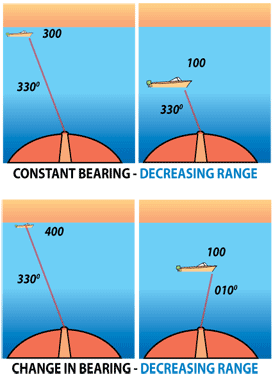Aids to Navigation

The closest things to signs on the water are aids to navigation. The purpose of ATON is to help boaters avoid problems on the water and for navigation when used in combination with a nautical chart. ATON includes buoys and daymarks (or dayboards). The U.S. Aids to Navigation System has been adopted by the Commission for use on all Commonwealth waters. Boaters should learn this system and presume nothing. Navigational aids are often moved by the Coast Guard, the Fish & Boat Commission, storms, heavy currents or vandals.
In the U.S. Aids to Navigation System, markers designate the edges of a channel and the direction of open water. The colors of these markers are important. Red markers indicate that boaters should navigate with the markers on their starboard (right) side when traveling upstream. Remember the slogan “Red, Right Return,” to find your way home to port. Green markers indicate that boaters should navigate with the markers on their port (left) side when traveling upstream. Red markers have even numbers and green markers have odd numbers.

To aid visibility, these buoys may also have lights that match their color. Further distinction between buoys is recognized by their shape:
- Nun buoys
These are cone-shaped red buoys with even numbers and mark the edge of a channel on a boaters starboard (right) side when entering from the open sea or heading upstream. - Can buoys:
TThese are cylindrical-shaped green buoys with odd numbers and mark the edge of the channel on your port (left) side when entering from the open sea or heading upstream.


Information and Regulatory Markers are used to alert boaters of various warnings and regulatory matters. These regulatory markers are white can buoys with orange shapes and black lettering.
SAFE SPEEDA boater’s speed of operation will vary according to the weather, water conditions, time of day or night, other boat traffic and individual boat characteristics. Safe speed allows the operator to be in control and take correct action to avoid a collision.
 RISK OF COLLISION
RISK OF COLLISION
A risk of collision exists when there is the possibility that two boats will arrive at the same point on the water at the same time. The first indication of a risk of collision is when one operator notices that another boat has a constant bearing (or constant relative position) and a decreasing range (the other boat is getting closer). When this occurs, the Rules of the Road make one boat either a stand-on (privileged) vessel or a give-way (burdened) vessel (explanation follows). The risk of collision ends when both boats have avoided the collision by proper action under the rules and are moving safely away from each other.
STAND-ON AND / GIVE-WAY VESSELUnder the Rules, the stand-on vessel is required to maintain its course and speed. The give-way vessel is required to stop or slow down or, when overtaking, to pass the other vessel in a safe manner. Under no circumstances should the stand-on vessel assume that the give-way vessel is going to take the action required to avoid a collision. Both operators are required to avoid a collision in any situation.